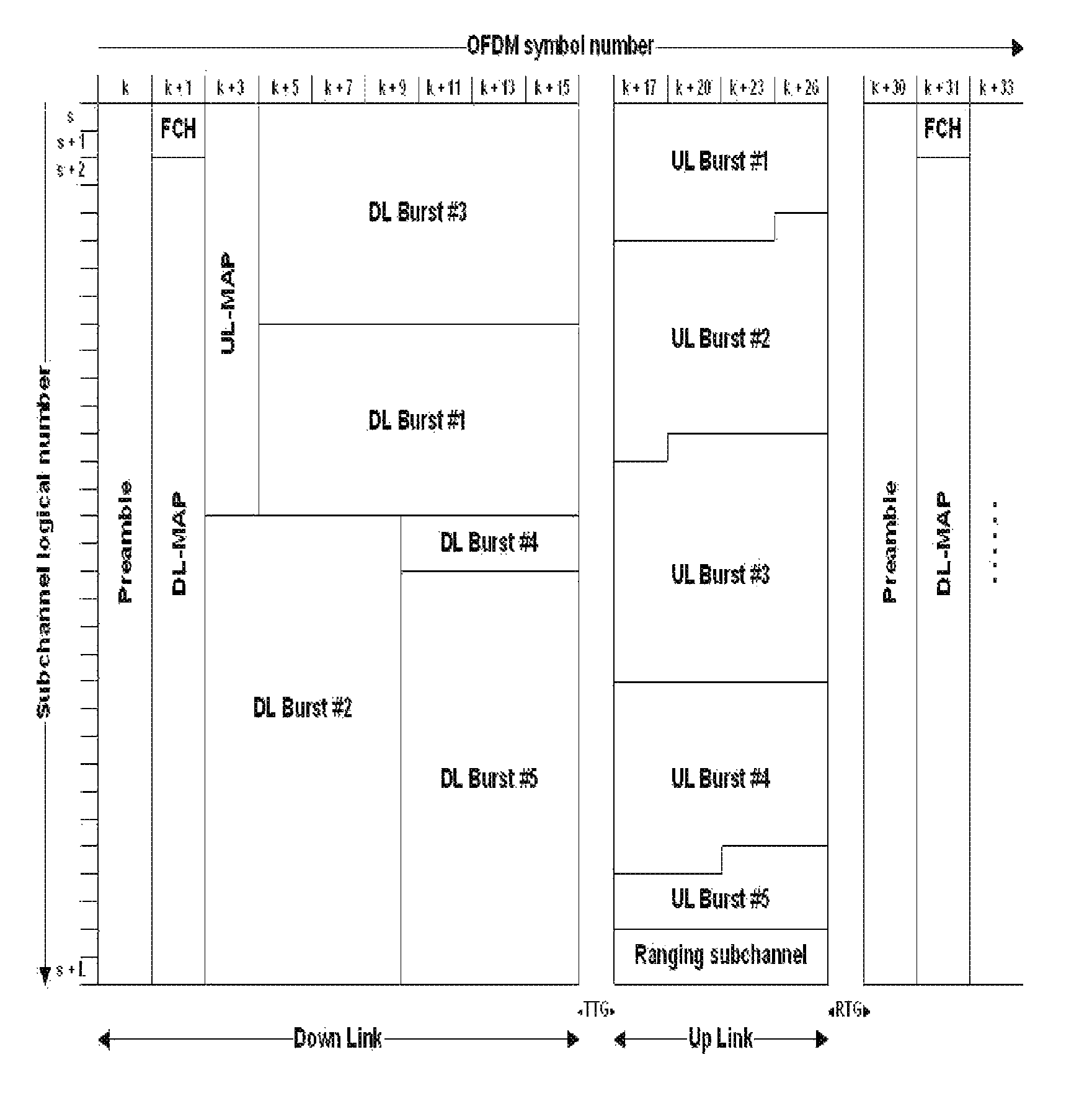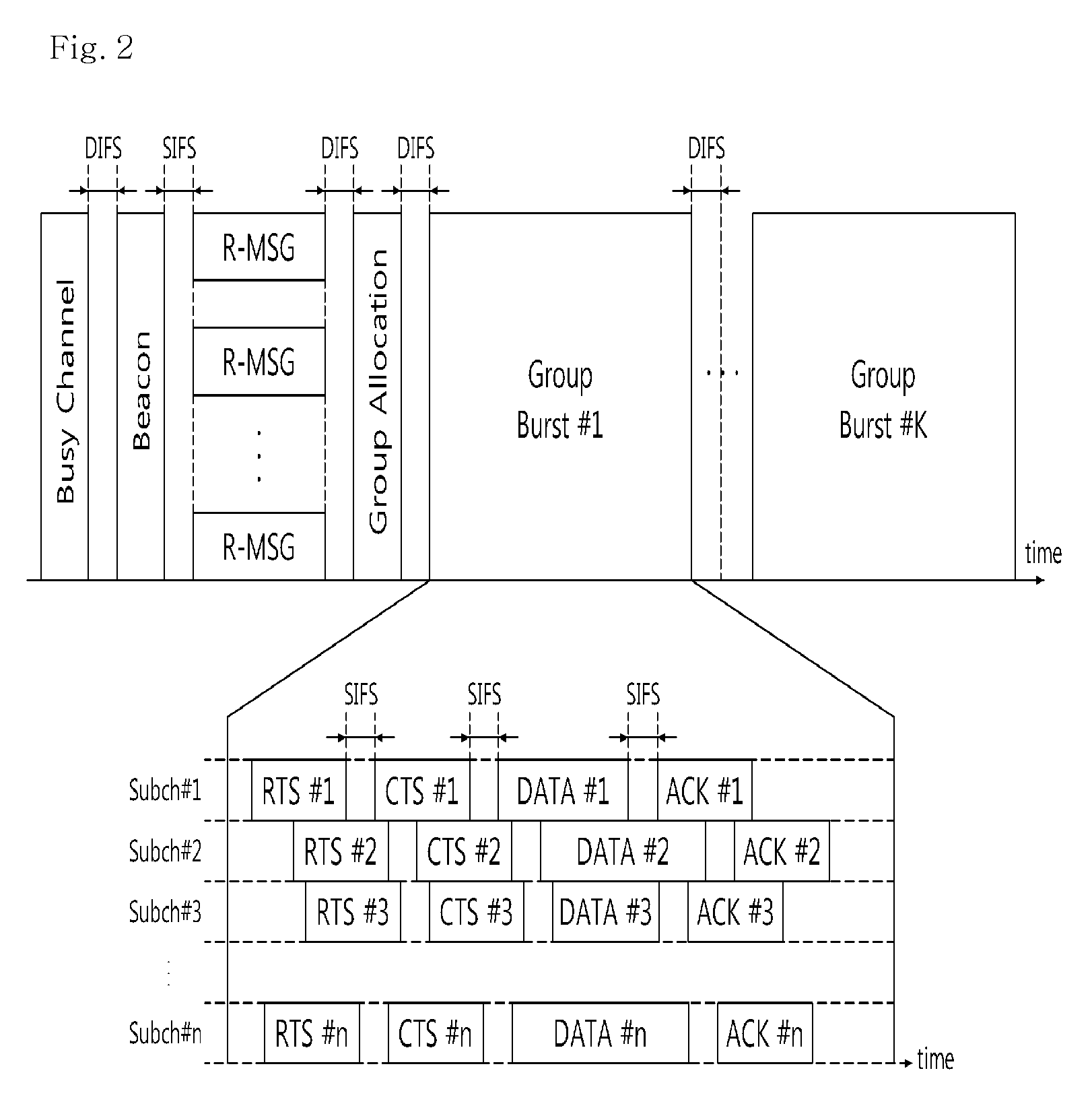OFDM-based multiple access method and communication device controlling the same
a communication device and multiple access technology, applied in multiplex communication, synchronisation arrangement, wireless communication, etc., can solve the problems of deteriorating communication efficiency, inability to use the ranging sub-channels always successfully, and failure of intentions, so as to increase the number of users who simultaneously use the service, reduce the overhead of time synchronization, and increase the efficiency of transmission channels.
- Summary
- Abstract
- Description
- Claims
- Application Information
AI Technical Summary
Benefits of technology
Problems solved by technology
Method used
Image
Examples
first embodiment
[0034]FIG. 2 is a table showing a MAC protocol according to the present invention, and FIG. 3 is a flowchart illustrating a MAC-based multiple access method of FIG. 2.
[0035]Referring to FIGS. 2 and 3, a multiple access method according to the first embodiment of the present invention starts when a base station or an SP (Access Point) transmits beacons to many and unspecified terminal in a coverage (S1).
[0036]Terminals that have received the beacons in the coverage transmit a test message R-MSG to the base station or the AP (hereinafter referred to as the “Base station”) in response (S2). At this time, the respective terminals transmit the R-MSG through selection of certain sub-channels or subcarrier waves.
[0037]The base station checks the reception time of the R-MSG, and classifies the terminals that have transmitted the R-MSG into several groups according to the reception time (S3).
[0038]At this time, the terminals may classify the terminals into several groups considering cyclic p...
second embodiment
[0060]FIG. 6 is a table showing a MAC protocol according to the present invention, and FIG. 7 is a flowchart illustrating a MAC-based multiple access method of FIG. 6.
[0061]Referring to FIGS. 6 and 7, it can be known that the second embodiment of the present invention is similar to the first embodiment until the time reaches the group allocation (T1 to T4).
[0062]In the groups, the time or order, in which the terminals belonging to the respective groups can use the sub-channels, is allocated, and through the GA packet, the respective terminals is designated with the group to which the terminals belong and access-permitted sub-packets.
[0063]After receiving the GA packet, the terminals belonging to the first group first attempt to use the sub-channels (T5 to T10).
[0064]In the case where the terminals intend to transmit the data burst, they confirm whether the access-permitted sub-channels are used by other terminals, and if the sub-channels are vacant, they transmit the data burst thro...
PUM
 Login to View More
Login to View More Abstract
Description
Claims
Application Information
 Login to View More
Login to View More - R&D
- Intellectual Property
- Life Sciences
- Materials
- Tech Scout
- Unparalleled Data Quality
- Higher Quality Content
- 60% Fewer Hallucinations
Browse by: Latest US Patents, China's latest patents, Technical Efficacy Thesaurus, Application Domain, Technology Topic, Popular Technical Reports.
© 2025 PatSnap. All rights reserved.Legal|Privacy policy|Modern Slavery Act Transparency Statement|Sitemap|About US| Contact US: help@patsnap.com



